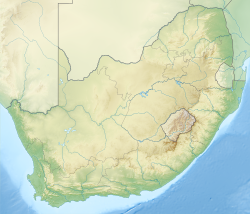| Bushbabies Monkey Sanctuary | |
|---|---|
 Bushbabies Monkey Sanctuary is situated close to Hartbeespoort Dam in the North West Province South Africa | |
| Coordinates | 25°43′11″S27°48′54″E / 25.71972°S 27.81500°E |
Bushbabies Monkey Sanctuary is a privately owned multi-species primate rehabilitation centre situated in the foothills and gorges of the Magaliesberg mountain range, close to Hartbeespoort Dam in the North West Province of South Africa.
Contents
The sanctuary takes in donated and rescued primates that may have been orphaned, raised as household pets, previously confined to captivity, abused, injured, or recovered from the illegal pet trade. [1]
Primates are rehabilitated for free-release within the natural forested environment of the sanctuary, where they are given a new lease of life in a wild environment and encouraged to search and hunt for food themselves.
The sanctuary is one of only eight free-release primate sanctuaries in the world, [2] and home to over 90 indigenous and exotic primates from around the world. A number of primates have also been born wild at the sanctuary. [3]
The sanctuary is non-subsidised, and supported by funding generated from guided tours and sales of curios.
It is open to the public seven days a week, year round. [1]


